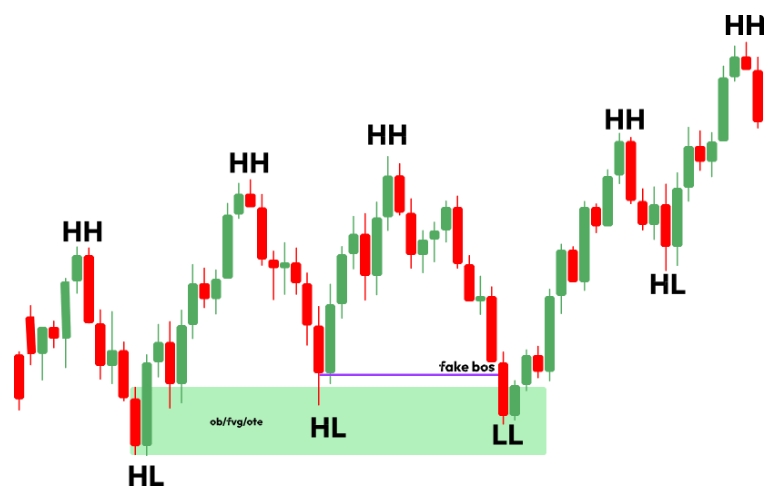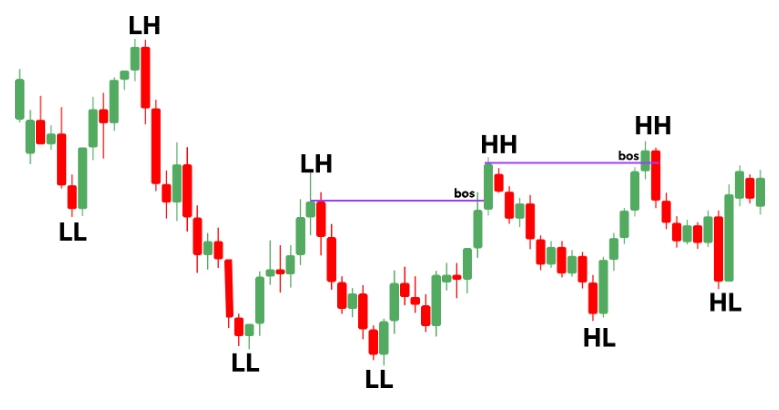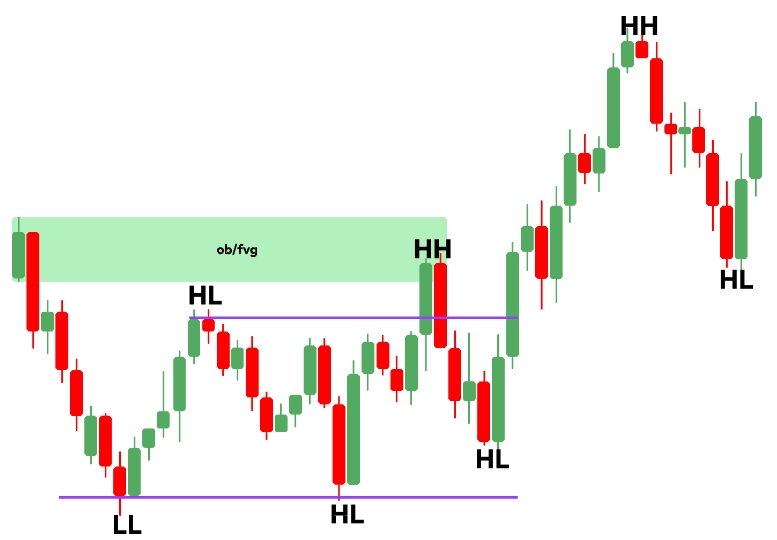Break Of Structure (BOS)
Breakdown of the ascending structure (BOS)
Fixing the price below the confirmed (HL) will be considered as a break of the bullish trend and the formation of a Lower Low (LL). After that the development of the downtrend is expected.
Breaking the structure (BOS) allows you to open a position at the beginning of the formation of the opposite structure. That is, you have the opportunity to open a trade (Short) after the formation of Lower High (LH)

The upward trend is confirmed by the formation of three structural elements: (HH) - (HL) - (HH).
Downward trend in the formation of (LL) - (LH) - (LL)
As can be seen in the example after the update (HL) was formed a downward structure (LL, LH, LL) after which the trend has changed.
Each (HL) should be formed from local support zones
Fake BOS of the ascending structure

When (HL) WAS NOT formed from a support zone (orderblock, imbalance, discount zone), an uptrend is allowed to continue, especially if the breakout (touch of the support) was made by a shadow of the candle, and then there was a test of the support zone.
The update of (HL) was made and touch of the support zone was made by a shadowwof the candle, which increase the probability of a false break in this context. Price continued to move in a bullish trend.
Breakdown of the Downward Structure (BOS)
The downtrend will be broken when the confirmed lower high (LH) is updated, after that, the uptrend is expected to start

Determination of the broken structure opens the possibility to trade at the beginning of a new trend (Uptrend). After breaking the downtrend it would be interesting to consider opening a long position on the formation of a higher low (HL)
Higher Low (HL) is the key element. Identify the potential reaction zone between Lower Low (LL) and Higher High (HH) (the support/imbalance/discount zone), and wait for a reaction in this area to open a position. Based on the reaction at this stage it will be possible to know if the breakdown was real.
Fake BOS of the downward structure
When the (LH), which WAS NOT formed from the resistance zone (orderblock, imbalance, premium zone), the continuation of the downtrend is possible, especially if the breakout (touch of the resistance) was made by a shadow of the candle, and then there was a test of the resistance zone. The scheme of a false break structure on a bullish trend works similarly on a bearish trend, only in the opposite direction.

In fact, it was a corrective movement to create a new (LH)
Range
Range (flat, consolidation) - no higher highs or lower lows, price moves sideways. The market enters the consolidation stage after an impulse price movement. The big player is distributing or accumulating a position.
Most of the time the price is in a sideways movement, in most cases the exit from the flat will be in the direction of the general price direction. It is necessary to properly consider the context for a high probability of determining a price move from the rand.

In the example above, the price formed a new (HH) on the higher timeframes, and the correction began. At the lower timeframes it's considered as an uptrend.
Correction on higher timeframes is a trend on lower timeframes

An example of collecting liquidity from the previous high and re- accumulating from the resistance zone (orderblock, imbalance) and further exit from the ridge towards the general price direction.
Last updated